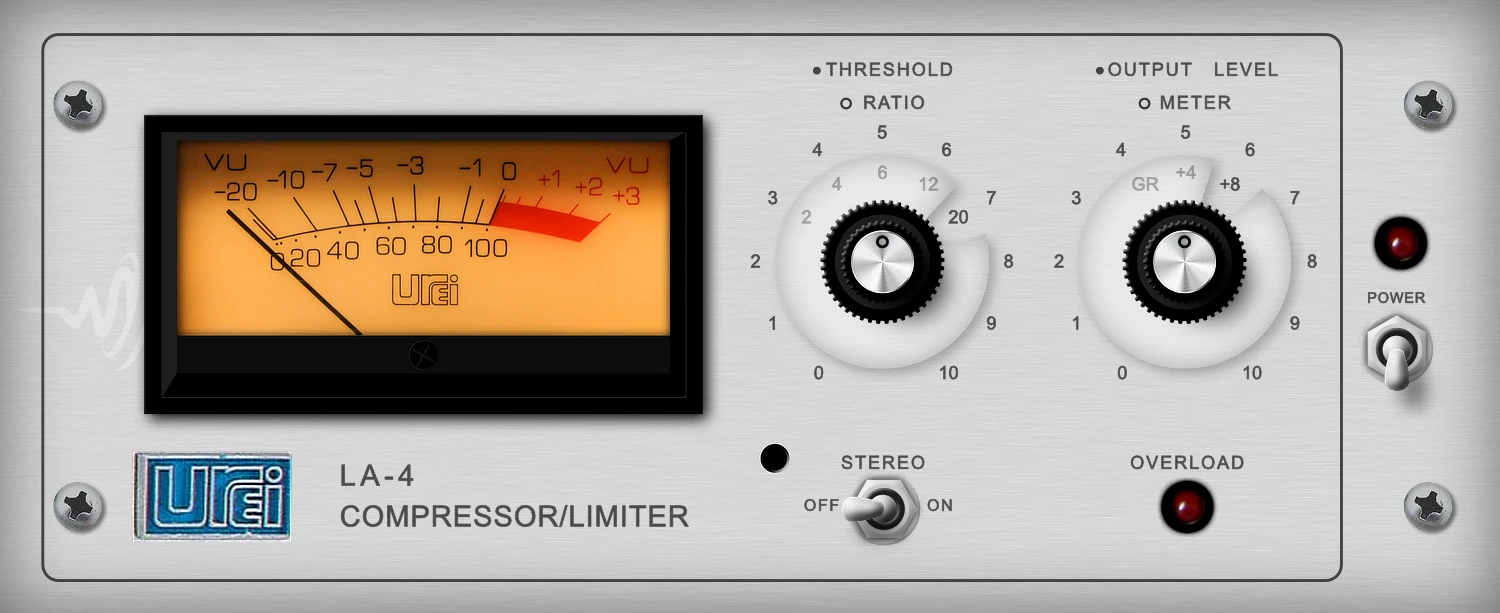The Urei LA-4 is a single channel unit, but two units can be linked for stereo operation. It uses an LED-based optical element to control the gain reduction, which is said to produce a smooth and natural sound. The Urei LA-4 has simple controls for input/threshold, output gain, ratio, and meter function. It can be used for various applications, such as vocals, drums, guitars, bass, keyboards, and more.
The Urei LA-4 was introduced in the late 1970s as a successor to the popular LA-3, which used a class A circuit and a T4 opto cell. The LA-4 used op-amp electronics and an LED-based optical element, which made it cheaper and more reliable than the LA-3. However, some users prefer the sound of the LA-3 over the LA-4, as they find it warmer and more musical.
The Urei LA-4 is considered a classic compressor/limiter that has been used by many famous artists and producers, such as Michael Jackson, Quincy Jones, Prince, Stevie Wonder, Bruce Swedien, and more. It is still sought after by many audio enthusiasts and collectors today.
Urei LA-4 History
If we talk about the Urei LA-3A being a blend of Urei LA-2A and a touch of 1176, then the Urei LA-4 takes a different approach. In terms of functionality and the overall vibe, it’s the opposite. The LA-4 features a dual-pot design for its primary controls, allowing users to select from ratios like 2:1, 4:1, 8:1, 12:1, and 20:1. It also flips the orientation of these controls, renaming them “threshold” and “output,” making it feel more like an 1176. However, it still sticks to the optical design and doesn’t introduce controls for attack and release settings.
The Urei LA-4 marks the end of the class A design era and introduces an early integrated circuit (IC) chip. It also adds a handy front-panel switch for stereo linking and unlinking of two units, which is quite convenient since the LA-3A and LA-4 were often used in stereo setups. Perhaps the most intriguing change is the switch to an LED-based optical design, likely a cost-saving measure, and possibly a way to address the “panel aging” issue found in the original T4 (which used to require periodic replacement, similar to tubes).
Around 1980, the LA-4 underwent further design modifications and received component upgrades for the original ICs. The Urei LA-4 had a production run from 1977 to 1989, and during that time, it saw both blackface and silverface versions.
Urei LA-4 Performance
- Attack Time: 1 to 10 milliseconds for 63% correction, depending on signal waveform
- Release Time: 100 milliseconds to 1 second for 63% return, depending on the duration of limiting
- Compression Ratio: 2:1, 4:1, 8:1, 12:1, or 20:1; switch selectable from the front panel
- Threshold of Limiting: Adjustable with front panel threshold control and rear panel input level switch. Minimum level (±2 dB) to achieve 1 dB limiting is:
- RATIO | LOW RANGE | HIGH RANGE
- 2:1 | -61 dB* | -41 dB*
- 4, 8, 12, 20:1 | -45 dB* | -25 dB*







